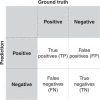The use of machine learning and artificial intelligence within pediatric critical care
- PMID: 36376506
- PMCID: PMC9660024
- DOI: 10.1038/s41390-022-02380-6
The use of machine learning and artificial intelligence within pediatric critical care
Abstract
The field of pediatric critical care has been hampered in the era of precision medicine by our inability to accurately define and subclassify disease phenotypes. This has been caused by heterogeneity across age groups that further challenges the ability to perform randomized controlled trials in pediatrics. One approach to overcome these inherent challenges include the use of machine learning algorithms that can assist in generating more meaningful interpretations from clinical data. This review summarizes machine learning and artificial intelligence techniques that are currently in use for clinical data modeling with relevance to pediatric critical care. Focus has been placed on the differences between techniques and the role of each in the clinical arena. The various forms of clinical decision support that utilize machine learning are also described. We review the applications and limitations of machine learning techniques to empower clinicians to make informed decisions at the bedside. IMPACT: Critical care units generate large amounts of under-utilized data that can be processed through artificial intelligence. This review summarizes the machine learning and artificial intelligence techniques currently being used to process clinical data. The review highlights the applications and limitations of these techniques within a clinical context to aid providers in making more informed decisions at the bedside.
© 2022. The Author(s), under exclusive licence to the International Pediatric Research Foundation, Inc.
Conflict of interest statement
The authors declare no competing interests.
Figures



References
-
- Gupta P, Gossett J, Rao Rettiganti M. 60: Trends in mortality rates in pediatric intensive care units in the United States from 2004 to 2015. Crit. Care Med. 2018;46:30. doi: 10.1097/01.ccm.0000528115.33510.1b. - DOI
Publication types
MeSH terms
LinkOut - more resources
Full Text Sources

